Search Results
Viewing: 1-114 of 114 | All

Condition
Precocious (Early) Puberty in Children
This Helping Hand™ is about early puberty in children. Sometimes, puberty can start earlier and before signs show.

Blog
Why Hasn’t My Child Hit Puberty?
When your child doesn’t ‘hit puberty’ at the expected time, he or she may have delayed puberty. This means their body hasn’t started to mature in terms of sexual development at the typical age.
Article
A Clinical Guide to Delayed Puberty
The treatment of delayed puberty involves address the underlying primary concern and appropriate management, and may not even require any endocrine or hormone therapy.

Blog
How to Talk with Your Kids About Puberty
When kids are toddlers or preschoolers, they start asking questions about their bodies – and even yours. If you start early and talk to them often, then talking about puberty when they get older will be a lot easier.

Blog
Does OCD Get Worse During Puberty?
Obsessive Compulsive Disorder (OCD) involves excessively worrying or thinking about something despite trying not to (obsessions) and feeling pulled to take certain actions to keep something bad from happening or to get rid of bad thoughts (compulsions).

Blog
Gynecology Care in Turner Syndrome
For Turner Syndrome specifically, gynecologists can help with puberty induction, prescribing hormone replacement therapy until the average age of menopause, review fertility options and discuss pregnancy risks related to Turner Syndrome.
Article
Cardiopulmonary Resuscitation (CPR): Age 1 to Puberty
This Helping Hand™ is a guide to general CPR for children that are over 1 year old and have not gone through puberty. It is not intended to be used as training material or in place of formal CPR training.
Article
Male Fertility Options
We provide services and consultation for male patients who may be at risk for long-term fertility or reproductive health issues. Learn more about male fertility preservation options.
Article
Cardiopulmonary Resuscitation (CPR): Puberty to Adult
This Helping Hand™ is a guide to general CPR for children that have gone through puberty and adults. It is not intended to be used as training material or in place of formal CPR training.

Blog
Vaginal Agenesis: What Is It?
Agenesis is a medical word that means a body part never formed before birth. The term vaginal agenesis means that the female does not have a vagina because it never formed. Vaginal agenesis affects about one in every 5,000 females.
Article
Gonadotropin Stimulation Test (GnRH)
This Helping Hand™ is about the gonadotropin stimulation test. This test is done to check how well the pituitary gland is working in children that started puberty early or late.
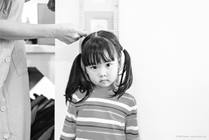
Blog
Are You Worried About Your Child's Height?
Short stature, or shorter height, is a common reason for a visit to a pediatric endocrinologist, a specialist in growth and hormones, but it does not always mean that there is an underlying health concern.

Blog
Prepubertal Vulvovaginitis: Causes, Treatment and Prevention
Prepubertal is the time frame before puberty when hormones activate in the body and cause changes throughout the body. Puberty especially affects the genital area, causing changes to the mucosa (the type of skin lining the vagina) and changes and growth of the labia (lips around the vagina/skin folds of the vulva) in addition to pubic hair growth.

Condition
Prepubertal Vaginal Bleeding
There are several different reasons why a pediatric patient may experience vaginal bleeding. It is important to notify your health care provider if you notice your child is having vaginal bleeding.

Blog
Primary Ovarian Insufficiency: Teenagers in Menopause
Primary ovarian insufficiency means that the ovaries have stopped working at a younger age than typical. It used to be called premature ovarian failure and is often called premature menopause. In POI, the ovaries stop producing hormones and eggs, resulting in hormone deficiency and infertility.

Condition
Vulvovaginitis
Vulvovaginitis is inflammation and irritation of the genital area. This may occur in females of any age, but it most often occurs in girls who have not started puberty.

Condition
Gonadal Dysgenesis
Gonadal dysgenesis, also known as 46XY gonadal dysgenesis and Swyer syndrome, is a condition in which the ovaries or testes (gonads) did not form the right way during pregnancy. Treatment may include surgery or hormone therapy.

Blog
Labial Adhesions: The Gynecological Problem You Haven’t Heard About
When the inner lips (labia minora) of the vagina become stuck together, it is called a labial adhesion. This is typically seen in girls between the ages of 3 months and 6 years old.
Article
Genital Exam - Male (Pre- or Early Puberty)
An exam of your child's genitals is done to check for possible disease, injury or abnormality.

Blog
Vaginal Inflammation and Irritation: Treating Vulvovaginitis
Vulvovaginitis, or inflammation and irritation of the genital area, may occur in females of any age – including newborns, toddlers, and children, but it most commonly occurs in girls who have not yet started puberty.

Blog
Menstrual Manipulation for Patients With Disabilities
Adolescence can be a period of turbulence and transition for both teens and their parents or caregivers. Teens with disabilities—physical, intellectual, or both—also encounter the challenges of adolescence, particularly when it comes to pubertal development, menstruation and sexuality.

Blog
Turner Syndrome: Unique as a Butterfly
Turner Syndrome is a genetic condition, a difference in the number or type of sex chromosomes, in those assigned female at birth.

Condition
Turner Syndrome
Turner Syndrome is a rare genetic disorder that affects females. It is caused by a partial or complete loss of an X chromosome.

Condition
Obstructed Mullerian Duct Anomalies
Obstructed mullerian duct anomalies are defects in the development of the reproductive system that are present in a female baby before birth.

Blog
Menstruation in Adolescents: The Importance of Using Menses as a Vital Sign
Adolescence is a time of many new things – including puberty changes and the onset of menstruation. A first period can be an exciting experience, but one that may cause some anxiety for young women and their caregivers.
Nevus Sebaceous
A nevus sebaceous is a type of birthmark that usually appears on the scalp. It may also appear on the face but this is less common. It is made of extra oil glands in the skin. It starts as a flat pink or orange plaque (slightly raised area). A nevus sebaceous does not go away on its own.

Specialty
Endocrinology
2222 Cherry Street
Suite 2300
Toledo, OH, 43608
(419) 251-8025
Click to learn more.

Condition
Gynecomastia
This Helping Hand™ is about gynecomastia and explains what it is, how it is treated and what the symptoms are.

Condition
Varicoceles
A varicocele is a mass of swollen blood vessels in the spermatic cord – the structure in the scrotum that connects the testicles to the body. Varicoceles are generally harmless and painless and do not require treatment. Physicians will recommend surgery if it appears the varicocele will impact testicle growth and future fertility.
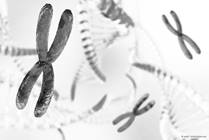
Blog
Klinefelter Syndrome: An Extra X Makes the Diagnosis
Klinefelter syndrome is very common, affecting approximately 1 in 600 males, although many individuals may go undiagnosed.

Blog
Anorectal Malformation and Long-Term Care: Meeting the Needs of Individual Patients
The most frequent issues that require long-term care include constipation, incontinence (stool and/or urinary accidents), urologic problems, reproductive health-related care and ongoing psychosocial care.

Blog
Gynecologic Assessment in CCPR
The gynecologic assessment with our Center for Colorectal and Pelvic Reconstruction (CCPR) team begins with a review of all medical records available to us at the time of intake.
Turner Syndrome (Genetic Disorder)
Turner syndrome is a genetic disorder that affects people born female.

Blog
The "Period" Talk! What's Normal?
Girls tend to drive themselves crazy about their periods. Is it normal? Am I okay? Let’s be honest, these are questions all of us girls ask over the arc of our lives, from first periods to periods long gone.
Resources for Providers
View our practice tools and additional information for providers.
Article
Male Reproductive System
This Helping Hand™ explains what body parts inside (internal) and outside of the body (external) make up the male reproductive system.
Article
Female Reproductive System
This Helping Hand™ explains what body parts inside (internal) and outside of the body (external) make up the female reproductive system.
Article
Clinic Visits
The American Diabetes Association (ADA) recommends that every 3 months anyone with diabetes should be seen by a healthcare provider who can help manage diabetes. This chapter will help you make sure you are ready for each appointment.
Condition
Pediatric Obesity
The American Academy of Pediatrics recommends using body mass index (BMI) to screen for overweight children beginning at age 2 and through age 19.

Condition
Intracranial Hypertension (Pseudotumor Cerebri)
Idiopathic intracranial hypertension, sometimes called pseudotumor cerebri, is a condition in which the cerebro-spinal fluid is not able to drain normally.

Condition
Vaginal Anomalies
Vaginal anomalies are disorders that involve abnormally formed or absent vaginas. These include: vaginal agenesis, imperforate hymen, septate hymen, transverse vaginal septum and transverse vaginal septum. These occur in about 5% of females with an anorectal malformation/imperforate anus.
Article
Menstrual Period
Menstrual periods are when the lining of the uterus flakes off (sheds) and blood/menstrual fluid passes through the vagina. Periods start about 2 years after puberty starts. The average age is 12. However, it can start as early as 9 or as late as 14.

Condition
Labial Hypertrophy
Larger-appearing labia minora, known as labial hypertrophy, may be completely normal. Labia vary in appearance with a wide range of normal regarding the size, shape and color. The majority of patients who have concerns about labial hypertrophy have normal labia.

Condition
Amenorrhea
Amenorrhea is when a girl or woman does not have her period. Primary amenorrhea is when periods have not started by age 16. Hormone levels and anatomical problems can cause amenorrhea.

Specialty
Turner Syndrome Clinic
The Turner Syndrome Clinic provides complete, personalized care for children with Turner syndrome.

Blog
Understanding Baby Acne: A Guide for Parents
Baby acne is common and temporary. With patience and gentle care, baby acne will soon clear, leaving your child’s skin healthy and smooth.

Specialty
Endocrinology
Through clinical and academic excellence, The Section of Endocrinology diagnoses and treats a wide range of conditions including adrenal disorders, calcium and bone disorders, cystic fibrosis, diabetes, puberty and sexual development disorders, growth disorders, pituitary disorders and more.
Menstrual Dysfunction in the Athlete
Many things can cause changes in hormone levels. These changes can lead to irregular or missed periods, especially in athletes.

Condition
Hymen Variants
Hymen is a thin piece of tissue located at the opening of the vagina. The hymen needs to be open to allow menstrual blood and normal secretions to exit the vagina. Hymens come in different shapes including imperforate hymen, microperforate hymen, cribiform hymen and septate hymen.
Slipped Capital Femoral Epiphysis (SCFE)
Slipped Capital Femoral Epiphysis is a hip injury that involves the growth plate (physis) of the thigh (femur) bone. This injury occurs when the neck of the femur (metaphysis) moves in relation to the ball on the top part of the femur (epiphysis).
Article
Complications
When you have diabetes it is possible to get acute problems or chronic problems (complications). Learn more about possible complications and what you can do to prevent them.

Blog
Pilonidal Disease: Using Laser Hair Removal to Prevent a Chronic Skin Infection
Pilonidal disease is a chronic skin infection in the crease of the buttocks, affecting more than 70,000 people each year. A new treatment with laser hair removal may more safe and effective than shaving or surgery. Read about this option and find out if your child may qualify for our study.
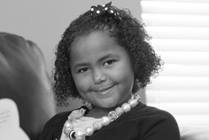
Specialty
Intracranial Hypertension Clinic
The recognition of idiopathic intracranial hypertension in children has increased dramatically. We are leading the response to this trend with the development of a multidisciplinary clinic for the specialized diagnosis, treatment and ongoing care of these unique children.

Condition
Undescended Testicle
Testicles are formed prior to birth in the abdomen below the kidneys, and progressively descend during pregnancy from the abdomen through the groin into the scrotum. An undescended testicle is a testis that fails to descend into the scrotum.
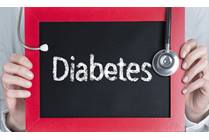
Blog
Debunking Diabetes Myths
If your child has been diagnosed with diabetes, you may be wondering what it will be like to manage the condition. Managing and monitoring diabetes is an important and ongoing process that is in the best interest of your child.

Blog
Not Your Mother's Gynecologist: Why Adolescent Girls Should See Their Own Specialists
Although adult gynecologists treat conditions in older women, differences in the anatomy of children make the advanced training of a pediatric and adolescent gynecologist valuable.

Blog
Is Your Child Ready to Be a Babysitter?
Having your child become a babysitter can be exciting and helpful! Make sure they are equipped with all the right tools before taking on this task.

Condition
Tinea Versicolor
Tinea versicolor (TIN ee uh VUHR sih kuhl er) is a common rash caused by the overgrowth of microscopic yeast on the skin's surface. The rash looks like small, scaly spots.
Pseudotumor Cerebri (PCT)
Pseudotumor cerebri (PTC) is also known as idiopathic intracranial hypertension (IIH). It is a disease that causes increased pressure in the brain.

Blog
Fertility Preservation: Planning For Life Beyond Treatment
Fertility can be a sensitive topic for some families, especially when children and adolescents are faced with life-altering medical conditions that could affect future parenthood.

Condition
Hypothyroidism
This Helping Hand™ explains the cause, types, symptoms, diagnosis, and treatment for hypothyroidism.

Condition
Cradle Cap
Seborrheic dermatitis, also known as cradle cap, is very common in infants and children. It appears as scaly, itchy, white, yellow or red patches. It most often appears on the scalp but can also be found on the face, ears, or in body folds such as under the arms and behind the knees.
Hidradenitis Supperativa (HS)
Hidradenitis suppurativa (HS) is a long-term (chronic) skin condition. Plugged pores and red, tender bumps or boils begin deep in the skin around hair follicles that contain specific sweat glands called apocrine glands. The tender bumps often enlarge, break open and drain pus.

Blog
Heart Safe Schools Can Prevent Sudden Cardiac Death
Taking the necessary steps to become a Heart Safe School ensures that should a cardiac incident occur, there will be school personnel who are prepared to jump into action, with equipment that is easily accessible and operated, to save a life.

Blog
What is Ovarian Tissue Cryopreservation (OTC)?
Many medical conditions require treatment that can impact long term fertility and reproductive health. OTC is a procedure that may allow girls and young women the opportunity to have children later in life by removing and freezing ovarian tissue before these treatments start.

Blog
Undescended Testicles and Your Son’s Health
Testicles are formed in the abdomen prior to birth and descend through the groin and into the scrotum during the course of the mother’s pregnancy. An undescended testicle is one that fails to descend into the scrotum prior to birth.
News
Suicide Trends in School-Aged Children Reveal Racial Disparity
While overall suicide rates in children younger than 12 years have remained steady, a new study shows increasing rates in black children and decreasing rates in white children. Suicide is a leading cause of death among children younger than 12 years.
Article
Strength Training for Children
Strength training has proven to be a safe and effective method of conditioning for adults. Learn if strength training is okay for children and adolescents.
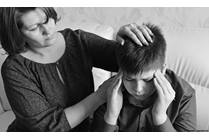
Blog
Migraine: More Than “Just a Headache”
Migraines are one of the leading causes of disability and missed school in children. So when is your child’s head pain more than just a headache? And when should you see your pediatrician?
News
New Adolescent Hematology Clinic at Nationwide Childrens Hospital
Unrecognized bleeding disorders are more common in adolescents, especially females, than many parents think. Nationwide Children’s Hospital’s new Adolescent Hematology Clinic, located at the Dublin Close To HomeSM Center and the only one of its kind in Ohio, offers both hematology and

Blog
Is Strength Training Safe for Kids?
The safety and effectiveness of children participating in strength training has previously been a source of great debate. However, despite previous misconceptions there is now evidence supporting strength training by pre-adolescent and adolescent children and its acceptance by medical and fitness

Blog
Type 1 Diabetes: Early Detection Can Lead to DKA Prevention
If your child is drinking more than usual, urinating more than usual, bedwetting, or losing weight that they do not mean to, it is important to see a healthcare provider right away. Doing so may help lead to an earlier diagnosis of type 1 diabetes and prevent DKA.

Condition
Nephrotic Syndrome in Children
Nephrotic syndrome is characterized by symptoms that result from changes that occur to the small, functional filters in the kidneys.
Bartholin's Cyst
A Bartholin’s cyst is a pocket of fluid that forms in the tissue surrounding the vaginal opening. Bartholin glands create fluid that lubricates the vagina.
Article
Allowing Youth Sports to be Child's Play
It has been documented that physical activity is necessary for normal growth in children. However, when the activity level becomes too intense, or excessive, in too short a time period tissue breakdown and injury can occur.

Blog
Is It a Temper Tantrum or Something More Serious?
Defiant behavior among toddlers and young children is a normal phase of child development. Children might throw temper tantrums or have rapid mood changes

Blog
Cavity Prevention: 4 Tips
Your child is unique: choosing the best fit for your family can take the confusion out of cavity prevention!
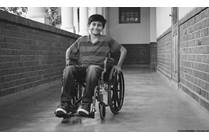
Blog
Duchenne Muscular Dystrophy: Improving Patient Care Through Teamwork
Duchenne Muscular Dystrophy (DMD) is a genetic disease that causes muscle weakness, eventual loss of the ability to walk, and failure of the heart and lung. Boys with DMD typically do not survive past their twenties, but standardization of care and cutting edge research is changing this outlook.

Condition
Vesicoureteral Reflux (VUR)
Vesicoureteral reflux (VUR) is the abnormal backward flow of urine from the bladder to the kidneys. This backwards flow increases the child’s risk of urinary tract and kidney infections.

Condition
Uterine Didelphys
Uterine didelphys is a disorder present before birth in which a female develops two uteruses instead of one. Treatment could be needed if symptoms occur such as unusual pressure or cramping pain before or during a menstrual period or an abnormally high amount of bleeding during a menstrual period.
News
Back-To-School Belly-Aches May Be More Than Just Nerves
As students settle back into their desks for another school year, parents, school nurses and pediatricians respond to increased complaints of stomach pain. Many of these seasonal belly-aches are dismissed as nothing more than a case of the back-to-school blues.
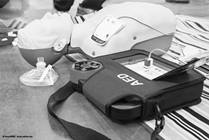
Blog
Preventing Sudden Cardiac Death in Children and Adolescents
Sudden Cardiac Arrest happens when the heart goes into a rapid, lethal heart rhythm called ventricular fibrillation. While cardiac arrest in this age group is rare, it does happen and is more likely to happen at school or during a sporting event.

Blog
Sleepwalking and Talking: What You Need to Know
We know sleep is important for everyone – especially children as they continue to grow and develop. But does your child walk in their sleep? Or maybe talk in their sleep? Is there a reason to be concerned about sleepwalking and sleep talking?
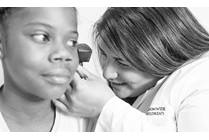
Blog
What to Expect at Your Child's Well-Child Appointment
Kids grow up so quickly and because your child is growing at a fast pace, it’s important to keep an eye on their wellness each year. By scheduling a yearly well-child check, you’re ensuring your child’s health is assessed by a pediatrician you can trust.

Blog
Brain Tumors in Children: Common Symptoms and Advances in Treatment
Brain tumors can occur at any age. Diagnosing a childhood brain tumor early and accurately can save lives and reduce long-term disability.
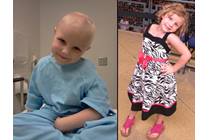
Blog
When Work Hits Home: Hailey’s Leukemia Story
Read one Nationwide Children's Hospital employee's journey with her daughter, Hailey's, leukemia.

Article
Healthy Sleep Habits for Older Children and Teens
Sleep is important at all ages. Sleep problems are common among many children and teens and can affect their focus while at school, work or home. Almost one-fourth of all children have some type of sleep problem. The problem can be caused by poor sleep habits or a medical condition.
Article
Tips for New Runners: How Much is Too Much?
There are recommendations for level and intensity of training for kids in all sports but the number one rule is to emphasize fun, safety and fitness when it comes to kids.
News
More Evidence Supports that Kids Headaches Increase at Back-to-School Time
Findings from Nationwide Children’s Hospital physicians demonstrate that headaches increase in fall in children, a trend that may be due to back-to-school changes in stress, routines and sleep.

Condition
Cloacal Malformation
Cloacal malformation, sometimes called persistent cloaca, is found in female children where the rectum, vagina and urethra are fused together, creating a single common channel. In developing fetuses, these openings are joined in a sac known as the cloaca. At birth, these openings are normally separate.

Condition
Anxiety Disorders
Anxiety disorders are the most common type of mental health disorder in children. There are many types of anxiety disorders, each with its own distinct symptoms.

Condition
Acne
In this Helping Hand™, we discuss the causes and treatment of acne. Acne is a skin condition that occurs when hair follicles become plugged with oil and dead skin cells. It causes whiteheads, blackheads or pimples.

Condition
Celiac Disease
Celiac disease is a chronic condition that results in damage to the lining of the small intestines. Symptoms are triggered by the ingestion of products that contain wheat, barley or rye proteins, collectively known as gluten.

Sleep Terrors and Sleepwalking
Sleep terrors and sleepwalking are related disorders of sleep that usually go away by the teen years. Sleep terrors are not the same as nightmares. Nightmares are bad dreams the child often clearly remembers the next day.

Article
For Parents
Parents play a key role in educating children and providing support to prevent unplanned teen pregnancies. Check out resources for you.

Blog
Ovarian Torsion: What Parents Need to Know
Ovarian torsion needs to be considered in any girl or young women who complains of sudden onset abdominal pain, particularly when the pain comes with nausea and/or vomiting.

Blog
Lupus and Kids: Understanding Child Onset Disease
There are different types of lupus: skin only, systemic (affecting multiple organs), drug induced.

Blog
8 'Not Now' Tips for Teens: Real Strategies for Denying or Delaying Sexual Behavior
Despite knowing about the risks of unsafe behaviors related to drugs, alcohol and sexuality, teens and adolescents still feel the powerful pull of peer pressure.


